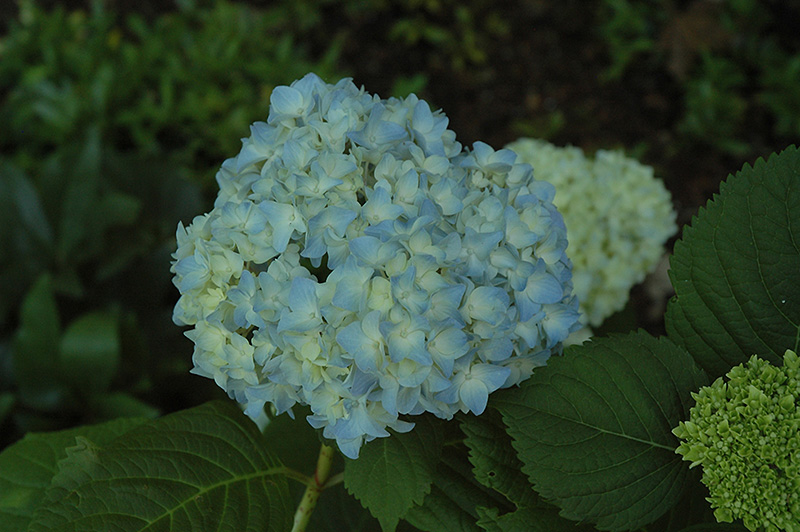Mini Penny Hydrangea
Description
This compact, dwarf variety produces stellar, light pink or blue mophead blooms depending on soil pH, on strong upright stems; luxurious, large, shiny green foliage; a gorgeous addition to the garden, and also makes a great low hedge
Landscape Attributes
Mini Penny Hydrangea is a multi-stemmed deciduous shrub with a mounded form. Its relatively coarse texture can be used to stand it apart from other landscape plants with finer foliage.
Mini Penny Hydrangea is recommended for the following landscape applications;
Planting & Growing
Mini Penny Hydrangea will grow to be about 3 feet tall at maturity, with a spread of 4 feet. It tends to be a little leggy, with a typical clearance of 1 foot from the ground. It grows at a fast rate, and under ideal conditions can be expected to live for approximately 20 years.
This shrub does best in partial shade to shade. It requires an evenly moist well-drained soil for optimal growth. It is not particular as to soil type or pH. It is highly tolerant of urban pollution and will even thrive in inner city environments, and will benefit from being planted in a relatively sheltered location. Consider applying a thick mulch around the root zone in both summer and winter to conserve soil moisture and protect it in exposed locations or colder microclimates. This is a selected variety of a species not originally from North America.
Mini Penny Hydrangea makes a fine choice for the outdoor landscape, but it is also well-suited for use in outdoor pots and containers. Because of its height, it is often used as a 'thriller' in the 'spiller-thriller-filler' container combination; plant it near the center of the pot, surrounded by smaller plants and those that spill over the edges. It is even sizeable enough that it can be grown alone in a suitable container. Note that when grown in a container, it may not perform exactly as indicated on the tag - this is to be expected. Also note that when growing plants in outdoor containers and baskets, they may require more frequent waterings than they would in the yard or garden. Be aware that in our climate, this plant may be too tender to survive the winter if left outdoors in a container. Contact our experts for more information on how to protect it over the winter months.

